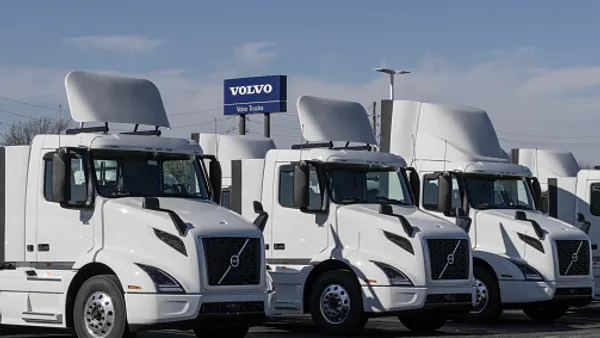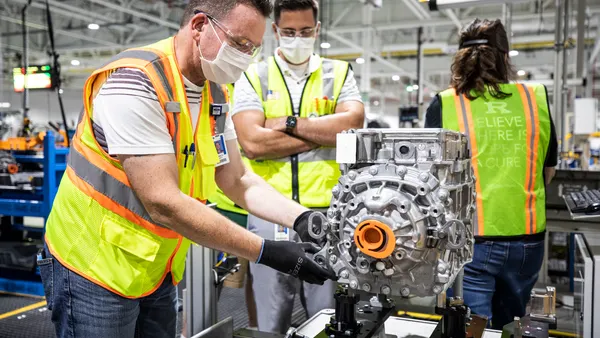Editor’s Note: This story is the second installment in “Manufacturing and Climate Change,” an in-depth series exploring the impacts of climate change on the manufacturing industry and the risks it poses to global production. Have a manufacturing story you want told? Email us at [email protected].
Every year, the U.S. sweats through more days of extreme heat.
In the 1960s, the U.S. dealt with an average of two heat waves per year. By the 2010s, that number had climbed to six, according to the Environmental Protection Agency.
At the same time, the average temperature across the country is rising by approximately .17 degrees Farhenheit per year, meaning more heat is on the way.
The increase in the frequency and level of hot temperatures in the U.S. has exposed vulnerabilities in the way businesses operate and posed clear examples of how rising temperatures across the country will alter the way people live and work.
That change extends to manufacturing operations, where large factory sites full of heat-producing machines create conditions for temperatures to rise and workers to sweat. Across the country, companies are quickly learning they need to ensure workers both inside and out are adequately protected from heat-related risks.
High temperatures are known to cause drops in individual worker productivity and put people at risk of heat-related illnesses including heat exhaustion and heat stroke.
"Tragically, the three-year average of workplace deaths caused by heat has doubled since the early 1990s. These extreme heat hazards aren’t limited to outdoor occupations, the seasons or geography," Secretary of Labor Marty Walsh said in a speech last year. "From farm workers in California to construction workers in Texas and warehouse workers in Pennsylvania, heat illness – exacerbated by our climate’s rising temperatures – presents a growing hazard for millions of workers."
Workers across industries suffer heat-related illnesses, including manufacturing
Getting aggressive on heat safety
The increased threat posed by heat has prompted the Occupational Safety and Health Administration to step up its efforts on safe workplace guidance and rule enforcement.
Last April, OSHA created a National Emphasis Program on heat-related workplace risks. The three-year program for the first time gives OSHA authority to proactively inspect workplaces, including manufacturing facilities, for heat related hazards in indoor and outdoor settings across the country.
It also puts a heat priority on days expected to be above 80 degrees, during which it initiates compliance assistance in high-risk industries and continues to "inspect any alleged heat-related fatality/catastrophe, complaint or referral,” according to the program stipulations.
Since the start of the program, the agency has conducted more than 1,600 workplace inspections, James Frederick, deputy assistant secretary at OSHA, told Manufacturing Dive.
The program, however, is not a national workplace safety standard, which OSHA still lacks. Currently only three states – Washington, California and Minnesota – have specific laws governing occupational heat exposure.
"Utilizing the National Emphasis Program really is a tool for us to help focus the resources that we have in this period of time, where we do not have a specific standard in place, to focus our resources on this hazard that is adversely affecting workers in various workplaces [and] manufacturing settings indoors," Frederick said.
More stringent regulation could be on the way. In October 2021, OSHA released an Advance Notice of Proposed Rulemaking (ANPRM) for Heat Injury and Illness Prevention in Outdoor and Indoor Work Settings, the first step in the federal rulemaking process to consider a heat-specific workplace standard.
"It's not a question of the hazard or the controls. It's more a question for us of making sure we have the proper requirements in place for employers to follow to provide a safe and helpful workplace for those workers," Frederick said.
Preparing for the heat is key
For manufacturers, the time to prepare facilities to better contend with heat is now, said Courtney Malveaux, a principal at Jackson Lewis and co-leader of the firm’s workplace safety and Health practice group.
"It's not really just limited to [extreme heat] and so I think the critical component for a lot of employers will be those days when the heat does not appear to be severe, or even when there's no heat advisory," Malveaux said.
"You don't have to necessarily outrun all the hazards and everything that you're encountering. But you have to get ahead of the competition."

Courtney Malveaux
Principal, Jackson Lewis
This is particularly true for factories with heat-producing equipment and processes.
"So even on a nice cool day outside it can be very hot on the inside," Malveaux said. "And if you have somebody who's exerting themselves heavily, especially if they haven't been acclimatized and if they're working near heat generating processes, or even if they're just working in a place where there's sunlight coming through the windows, then it can get dangerous quick."
Malveaux urged companies to consider a variety of factors to evaluate employees' risk, including the ambient temperature in the facility, meaning the temperature of the air surrounding equipment.
Air conditioning and proper ventilation is also key, as well as moderating things such as light, and therefore heat, streaming through windows, can help lower the temperature in the facility.
Other options for manufacturers include providing an air conditioned break room space for workers, ensuring there are no pipe leaks that could release heat, adding extra ventilation near heat-producing equipment and rotating workers frequently on hotter or more strenuous production lines, Frederick said.
As OSHA asserts its enforcement authority, Malveaux noted it’s equally important for manufacturers to prepare for protactive spot site inspections by the agency.
That preparation includes writing a "heat illness prevention plan" to guide operations and mitigate the risk of injury from high temperatures.
While each plan should be specific to a facility, OSHA offers guidance on what general issues plans should cover:
- Training workers and supervisors on heat-illness prevention strategies;
- monitoring weather and workplace conditions;
- conducting a heat hazard assessment of common environmental and work-related heat stress factors, when appropriate;
- implementing heat-illness prevention strategies to reduce heat stress; and
- planning for heat-related medical emergencies.
The plans should include specific language around how the company is training employees to recognize the signs of heat-related illness, as well as how the facility will communicate necessary information to workers on heat advisory days.
"You don't have to necessarily outrun all the hazards and everything that you're encountering. But you have to get ahead of the competition," Malveaux said. "You have to get ahead by having your heat illness plan ready that's tailored with all those components that an OSHA inspector can look at it and say, 'Okay, they're addressing heat illnesses realistically for their workplace and for their employees. And I can see that they're taking this seriously.’”























